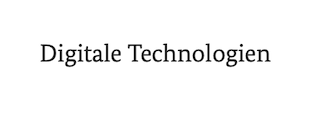CERAHEAT4.0
Unlocking the potential for resource and energy efficiency in high-temperature, lightweight, fibre-reinforced ceramic construction systems
Large corporations, small businesses and medium-sized enterprises alike face the challenge of addressing the growing significance of sustainability and carbon neutrality. The aim of the CERAHEAT4.0 project is to enable companies to engage in ecologically conscious production by providing them with the necessary expertise. This is especially crucial for smaller businesses that may find it costly to access the required resources. In concrete terms, this involves setting up instance-based process monitoring for a specific technology: Ceramic Matrix Composites (CMCs). CMCs already play a key role in the provisioning of lightweight structures. Specific growth markets include the development of lightweight brake systems for passenger and commercial vehicles and high-speed trains, the semiconductor industry and aerospace with turbine and satellite components.
The objective of process monitoring is to establish a foundation for making accurate quality statements concerning the respective product. This is the only way to effectively optimise resources, given that production process chains involve complex interactions and high energy demands yet simultaneously require guaranteed product quality. The project team plans to use digital twins to improve the respective machines for each product or CMC component, thereby increasing efficiency. Examples include moulding presses, furnaces and processing machines. Entire process chains can also be optimised with the help of a digital twin.
The project team envisions a digital, integrative process for the production of CMC structures. When individual production sectors are linked and intelligent, data-driven control elements are implemented, it is possible to record interdependencies along the entire process chain – and thus uncover potential for saving resources. Intelligently adjusting the process parameters can reduce energy consumption by up to 40 percent along the entire process chain. The main factors here are savings in energy-intensive thermal processes and the efficient use of raw and auxiliary materials and tools. Detecting and avoiding rejects at an early stage also plays a key role. A life cycle analysis (LCA) is used to determine the specific CO2 equivalent for the overall balance of savings and the impact on the product.
Due to the cross-company project approach, the results can be applied across a range of industries. Concrete findings from pilot systems, including data calculations such as expected energy savings, make scaling up to series production a realistic option. The associated reduction in manufacturing costs can also result in competitive advantages for German suppliers in the international market.
Consortium:
- Engineered Ceramic Materials GmbH (consortium leader)
- Brembo SGL Carbon Ceramic Brakes GmbH
- Hufschmied Zerspanungssysteme GmbH
- Inno-focus digital GmbH
- IILS mbH
- Augsburg University of Applied Sciences
- University of Augsburg
- University of Stuttgart
Associated partner:
- Composite United e. V.
- Recommend this page:
- Print view
